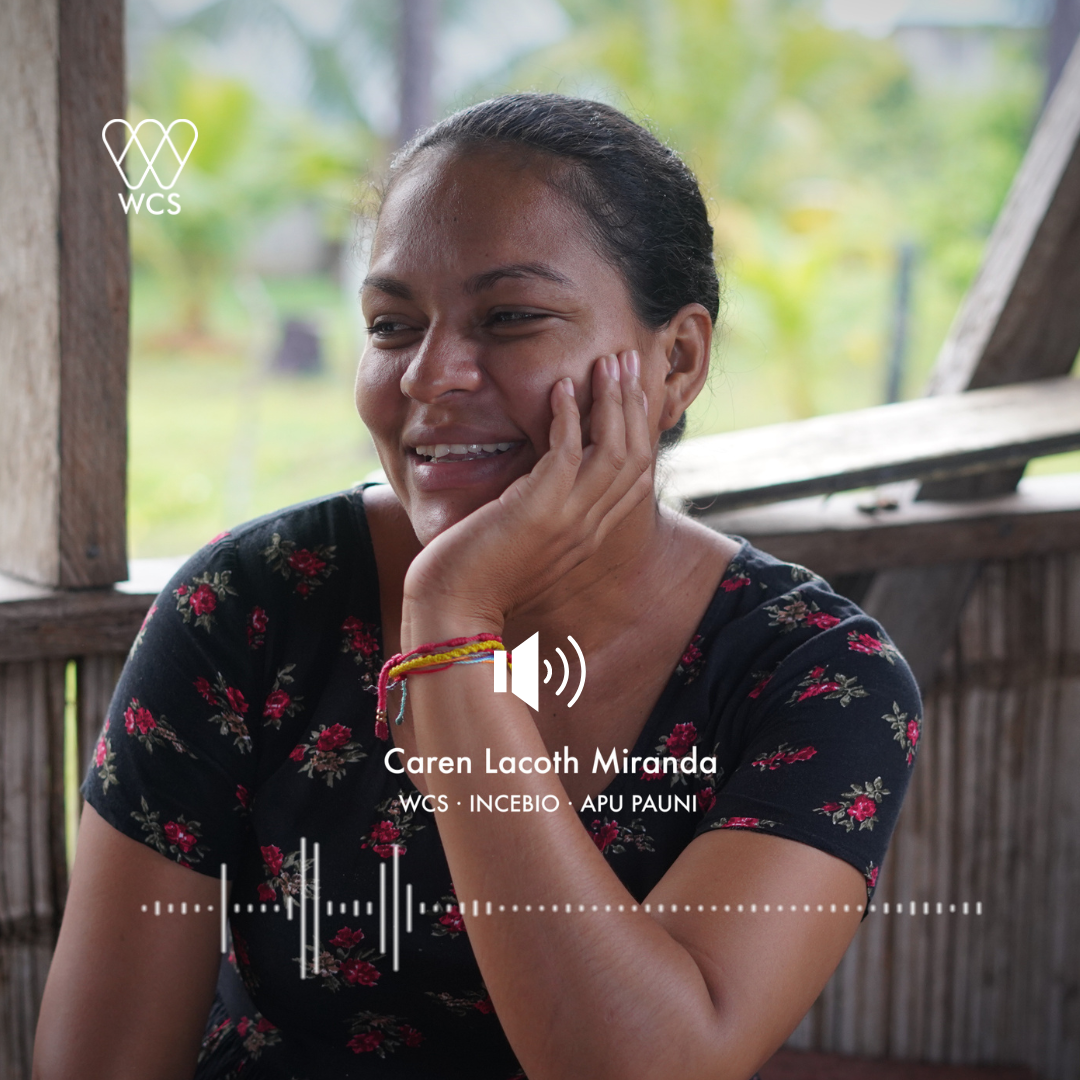"For us as indigenous women, Mother Earth is not a lifeless object; it has life. Mother Earth is sacred to us. Being an indigenous woman fills me with pride and satisfaction because we contribute to building our homes and our communities."
- Caren Lacoth -
On the International Day of Indigenous Women, we highlight the essential role of women in the preservation of nature and cultural heritage. Caren Lacoth, from the Mabita community in Honduras, shares her perspective on the significance of indigenous women in building homes and passing down traditions. As the Moskitia region confronts multiple challenges, indigenous communities are leading conservation efforts through collaborative projects.
 Foto: Caren Lacoth, a Miskito woman from Mabita, Honduras.
Foto: Caren Lacoth, a Miskito woman from Mabita, Honduras.
The Moskitia region faces a significant threat due to deforestation. According to the "Human Footprint" study led by WCS and other allies, this region has lost approximately 30% of its forest cover in the last 15 years due to illegal land grabbing and cattle ranching expansion. This habitat loss directly affects emblematic species like the Scarlet Macaw (Apu pauni in the Miskito language) and the jaguar.
It is in this area where the largest population of Scarlet Macaws in Honduras is estimated to reside. Their conservation and protection depend on collective efforts, as explained by Caren, who, along with her aunts and cousins, prepares food for the breeding and population reinforcement of these birds. They also participate in training sessions for their care, carry out patrols, and install camera traps for biodiversity monitoring. "It's beautiful to return to where one was born and apply the knowledge, and there's nothing better than doing it with my family."
 Map: The forest of La Moskitia mainly encompasses the Río Plátano Biosphere Reserve (the largest and most important protected area in Honduras, declared a UNESCO World Heritage Site and Biosphere Reserve since 1981), the Tawahka Asangni Biosphere Reserve, Patuca National Park, and the Bosawás Biosphere Reserve in Nicaragua.
Map: The forest of La Moskitia mainly encompasses the Río Plátano Biosphere Reserve (the largest and most important protected area in Honduras, declared a UNESCO World Heritage Site and Biosphere Reserve since 1981), the Tawahka Asangni Biosphere Reserve, Patuca National Park, and the Bosawás Biosphere Reserve in Nicaragua.
Local populations, especially indigenous communities such as the Miskitos, Garífunas, Pech, and Tawahkas, also face the invasion of settlers and illegal land appropriation. In response to these challenges, women like Caren Lacoth and other leaders are spearheading conservation and restoration initiatives.
As a strategy to protect and strengthen governance in Honduran Moskitia, the Interinstitutional Control Post was recently inaugurated in the Krausirpe community in the Gracias a Dios department. It will serve as a monitoring and training center for park rangers. The construction was supported by the Forest Conservation Institute (ICF), the Armed Forces of Honduras, WCS, and the European Union.

 Photo: Scarlet Macaw Care and Release Center in the community of Mabita.
Photo: Scarlet Macaw Care and Release Center in the community of Mabita.
The work carried out by the Mabita community is supported by partner organizations such as the Foundation for Ecosystem and Biodiversity Research and Conservation (INCEBIO), One Earth Conservation, ICF, and the Wildlife Conservation Society (WCS) from the Honduras-Nicaragua program. They are currently involved in projects related to cocoa production, forest restoration, and training of resource guards in the use of the SMART tool, a mobile application that allows for the collection, measurement, and evaluation of patrol and biodiversity data.
On the International Day of Indigenous Women, we applaud all indigenous women who continue to be a source of inspiration for present and future generations.
Happy International Day of Indigenous Women!